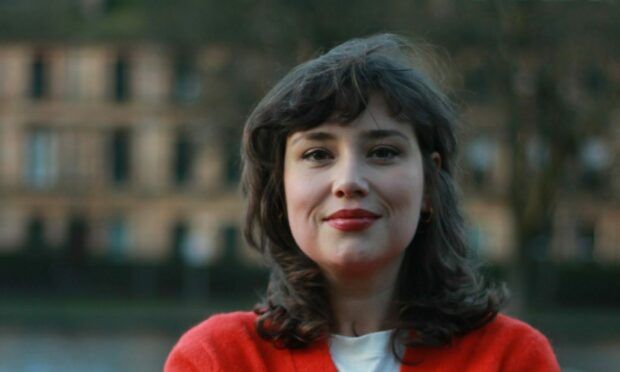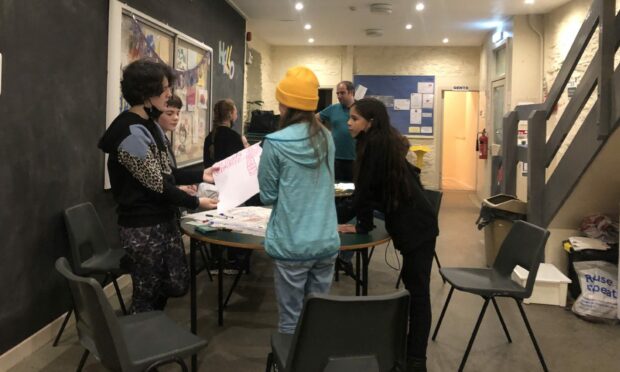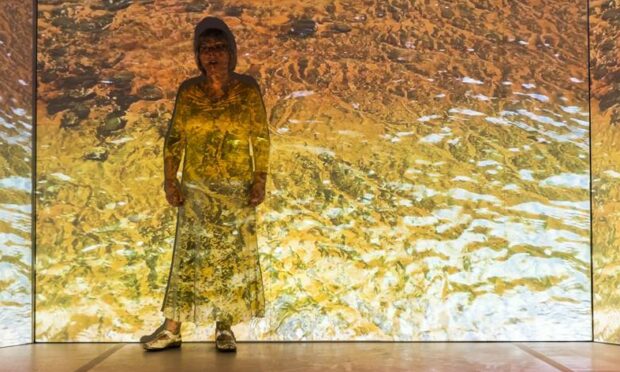The concerns and hopes of teenagers from Caithness about the environment are being captured on film to show to an international audience at COP26.
A series of short films is being made with youngsters by artist Sinéad Hargan as part of COP26’s Climate Portals project.
Sinéad is the Caithness artist in residence with Highland Culture Collective, focusing on the environment and coastlines.
The Royal Conservatoire of Scotland (RCS) graduate was asked to create a piece of work for Climate Portals, an arts and digital exchange that is taking an inventive approach to the climate change debate.
Technology will bring together communities around the world
As part of the project, a gold shipping container has been parked on the RCS campus in Glasgow to act as “a global portal to creativity, collaboration and conversation” during COP26.
It will use audio-visual technology to bring together people in the UK with communities and portals around the world.
The Glasgow project will connect to locations in Afghanistan, Bangladesh, Pakistan, Israel, Iraq, Palestinian Territories, Rwanda, Nigeria, Kenya, Uganda.
It will feature new artistic commissions, masterclasses and knowledge exchange around the theme of climate change.
Sinéad is working with teenagers from Thurso Youth Club and Caithness Community Connections’ teen cafe group in Lybster.
She will produce a series of short documentary-style films about the area’s relationship with and dependency on the sea.
The films will also project their views on the burgeoning renewables industry, including onshore and offshore wind projects and tidal schemes, as well as efforts to protect carbon sink peatlands.
“This is a really important opportunity to platform the voices of young people in the far north”, said Sinéad.
“Often they feel they get missed or are not included as much because of geographical distance or the small population here.
“This is a really important opportunity to platform the voices of young people in the far north”
Sinéad Hargan
“But it is important that they get to be part of the conversations at COP26.
“Particularly when this region has been heavily impacted by declining fish numbers and is now becoming a powerhouse for renewable energy.
“A lot of decisions are being made about this area and it’s vital that people here have a voice.”
Sinéad says it is being left largely to the teenagers to decide on the content of the films.
Teenagers’ views can have an impact
But she said the global nature of COP26 and the Climate Portals project means they will have an international audience.
“This is their international film debuts and what they say can have an impact,” she added.
“There is a lot of pressure on young people at the moment to start to resolve the climate crisis they have inherited. They feel overwhelmed.
“I hear from older people that the younger generation will sort it out.
“Actually we don’t have that much time. We can’t wait until the next generation are in power to make changes.
“The changes have to start now.
“We should look at this generation for inspiration and momentum rather than look for solutions from teenagers.”
Sinéad wants the films to lead to further discussions on the environment and climate crises, rather than it being a one-off project.
“This is a small project to kick that off. These community engagement projects on climate action need to continue after COP26.
“It can’t just be concentrated in two weeks. We need to think about how we continue these conversations afterwards.”
As well as being shown at COP26, the films are being screened at local youth clubs, as well as Lyth Arts Centre and North Lands Creative which co-host Sinéad’s artist-in-residence post.
“I feel it’s important to screen the films in the community which has as much value as the COP26 audience and needs to be part of the international conversation on the climate emergency.”


